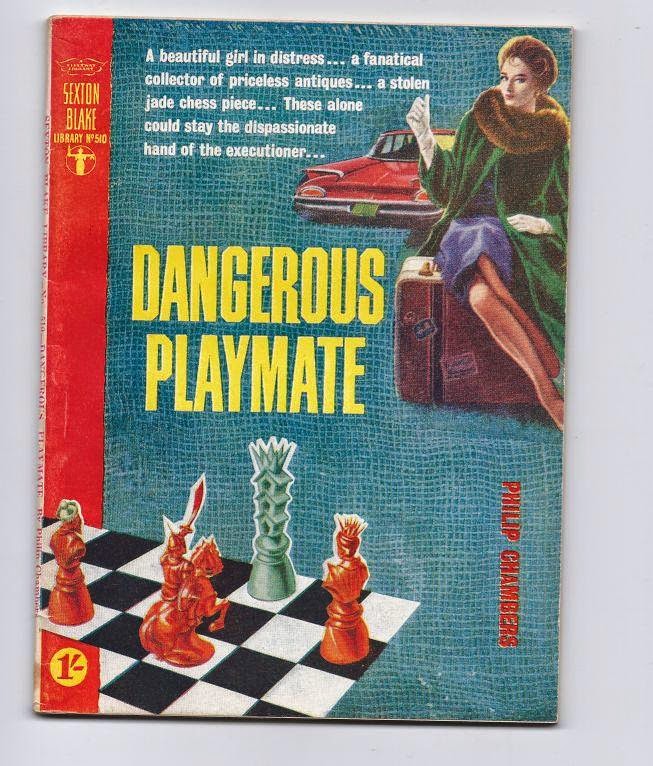 |
| The Warsaw Song, Chris Paischeff in the middle |
Some weeks (or months?) ago I wrote
a review of John Grant's A Comprehensive Encyclopedia of Film Noir and listed some Finnish specimens of film noir. I mentioned I'd be seeing some of them on big screen, since there was a festival of Finnish cinema here in Turku where I live and one of the themes of the festival was - ta-ta! - Finnish film noir. Here's a lowdown of the films I managed to see.
Varsovan laulu (
The Warsaw Song, 1953, director: Matti Kassila): hardboiled and cynical tale of two booze smugglers, who struggle with love and lust. Very noirish with a downbeat ending and some quite seedy love triangle in the middle of the film. Chris Paischeff makes a very nice femme fatale in the lead. Suffers from the director's indecisiveness: there are two plotlines that don't mix easily. Suffers also from laughably props in the scenes set overseas.
Pikajuna pohjoiseen (
Express to North, 1947, director: Roland af Hällström): I'm not sure whether this really qualifies as a film noir, but it has a very downbeat ending. The film seams almost effortlessly into a tragedy after being a thriller with comic overtones. Possibly one of the best Finnish feature films ever, reminiscent of English thrillers of the thirties and especially French films of the thirties and fourties. Set almost entirely on a train. Suffers from overacting at various points.
Silmät hämärässä (
Eyes in the Mist, 1952, director: Veikko Itkonen): a very peculiar film about a writer who's down on his luck and drifts into a hotel room seeing four desperate-looking men in a room across the street. The writer imagines what has brought the men together. Their fictional story is told in a flashback (that has some flashbacks seamed in it), and in the end it's revealed the men's story forms the writer's new short story. Quite intricate with some good scenes throughout, but a bit contrived and not very plausible, but still possibly the most noir of the Finnish film noirs.
 |
| Joel Rinne gets mad in The Price for One Night |
Yhden yön hinta (
The Price for One Night, 1952, director: Edvin Laine): an attempt to bring the neorealistic formula of the films such as
The Naked City to Finland. Succeeds at times, but is also unintentionally funny, especially in the scenes with criminals. On the other hand, Joel Rinne as the criminal mastermind gets into a Dennis Hopper craze as he twists his lady friend's head violently back and shouts: "Kiss Me! Kiss Me!" The film is fast-moving, though, and never really boring.
Olemme kaikki syyllisiä (
We Are All Guilty, 1954, director: Aarne Tarkas): director-writer Aarne Tarkas was very interested in American film and film noir (and in American popular culture altogether, he picked his last name from ERB's Mars books!) and that shows in his comedies and crime films. This is a serious attempt to depict a doomed love story between a young man who suffers from mania and fits of rage and an innocent young woman who loves him first, but betrays him in the end. Quite believable and suspenseful to the end. I believe Tarkas himself suffered from ADHD that was left unattended, and I got to thinking this film might be something of a self portrait.
 |
| Tulio's The Criminal Woman |
The film noirs I didn't manage to see:
Kultainen kynttilänjalka (The Golden Candelabra, 1946, director: Edvin Laine): crime film with gothic and comedy overtones. Never seen it, so can't comment. From what I've heard veers into camp.
Rikollinen nainen (
The Criminal Woman, 1952, director: Teuvo Tulio): I've seen this earlier, a story of a woman who's driven mad by a jealous and abusive husband. I've written about Tulio earlier
here.
These are of course not all the film noirs made in the Finnish studio system, I'm sure there's at least a dozen more. And of course there are some fringe examples, crime films that have lots of comic element in them, spy films made in the appropriate era, psychological thrillers that are devoid of the noir feel, pessimistic domestic dramas with downbeat endings etc.
I'm sure some of the films I mentioned above could be shown at a noir festival like, say,
Noir City that has had British and Spanish film noirs during the past years. Paging Eddie Muller!
See also my posts on Finnish western films, part one
here and part two
here. And since this probably qualifies as an Overlooked Film post, go to Todd Mason's blog
here to check the other overlooked films out!
 After Brian Evenson's weird and effective The Open Curtain I thought I'd be in the mood for something lighter, maybe something old, maybe something pulpy (or paperbacky). I have tons of old paperbacks in my shelves, but not enough to time for them. So I thought I'd read one.
After Brian Evenson's weird and effective The Open Curtain I thought I'd be in the mood for something lighter, maybe something old, maybe something pulpy (or paperbacky). I have tons of old paperbacks in my shelves, but not enough to time for them. So I thought I'd read one.






































